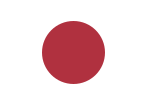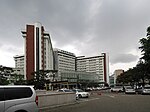First Republic of Korea

The first Republic of Korea (Korean: 제1공화국; RR: Jeil Gonghwaguk; lit. "first republic") was the government of South Korea from August 1948 to April 1960. The first republic was founded on 15 August 1948 after the transfer from the United States Army Military Government that governed South Korea since the end of Japanese rule in 1945, becoming the first independent capitalist republican government in Korea. Syngman Rhee became the first president of South Korea following the May 1948 general election, and the National Assembly in Seoul promulgated South Korea's first constitution in July, establishing a presidential system of government. The first republic claimed sovereignty over all of Korea but only controlled Korea south of the 38th parallel until the end of the Korean War in 1953, when the border was modified. The first republic was characterized by Rhee's authoritarianism and corruption, limited economic development, strong anti-communism, and by the late 1950s growing political instability and public opposition to Rhee. The April Revolution in April 1960 led to Rhee's resignation and the transition to the second Republic of South Korea.
Excerpt from the Wikipedia article First Republic of Korea (License: CC BY-SA 3.0, Authors, Images).First Republic of Korea
Daemyeong-gil, Seoul
Geographical coordinates (GPS) Address Nearby Places Show on map
Geographical coordinates (GPS)
| Latitude | Longitude |
|---|---|
| N 37.583333333333 ° | E 127 ° |
Address
대명길
Daemyeong-gil
03079 Seoul
South Korea
Open on Google Maps






